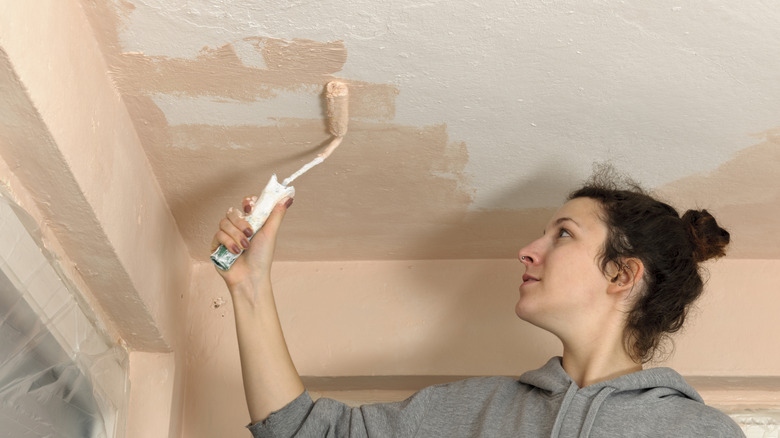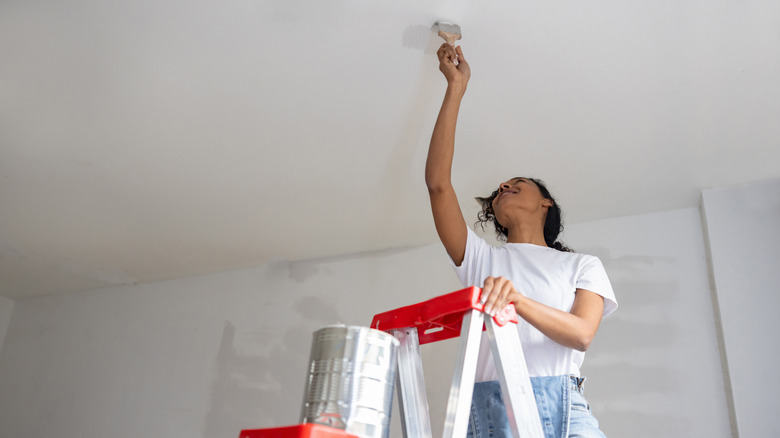Why There Are Lines On Your Ceiling After Painting And How To Easily Fix It
If you've had a sleepless night, you may have spent plenty of time staring at your ceilings, counting sheep. But have you ever noticed lines in your freshly applied ceiling paint job that seem to haunt you as a homeowner? Whether it's a DIY fix or a professional job, these lines can leave a space feeling completely unfinished, even after a fresh coat.
Before you grab your roller and start the whole process again, you should first understand why these lines are there in the first place so you can avoid them in the future. It is easy to make a mistake when painting ceilings, as those tough-to-reach places aren't on most homeowners' radar for a touch-up. Ceiling paint lines, also referred to as roller lines or flashing, often occur when sections of paint are applied unevenly, remain unblended during the drying process, or by layering wet paint over completely dried paint.
When you're painting any surface, it is important to maintain the same thickness of paint on your roller, as an inconsistent coating can leave you with these lines. Additionally, the drying conditions themselves can be the cause of this homeowner nightmare — either with the air being too damp or a significant change in temperature. And while you often can't account for those factors, adjustments to the application process can be a simple way to avoid the appearance of roller lines, leaving your ceilings fresh and smooth.
How to fix your ceiling lines
The fix for ceiling lines can be just as simple as a touch-up. If you're looking to get rid of only a few lines, you can always apply a new, even coat to that section. This can be the perfect fix for hiding smaller lines without needing to paint your entire ceiling. Just ensure that you are using a matte, flat finish on your paint of choice, as it will be better at hiding streaks.
However, it should be noted that the easy road is not always the smartest when it comes to painting your ceilings. Simply applying an additional coat to your rougher areas can be a cheap cover-up, but it can actually draw much more attention to your ceiling lines. As you are applying wet paint to a dry surface, you leave room for new lines that cannot get properly blended in, turning a few simple lines into large patches.
It might be a harder sell, but the most effective way to get rid of your ceiling lines is to give your ceiling a completely new coat. It avoids the risk of creating larger patches of lines while also ensuring that you cover up your old ones. Just be sure to use the right paint, keep a wet edge to blend each pass with your roller, and coat your roller evenly. Now the hardest part of your newly painted ceilings will be getting those crisp corners on your paint job.

